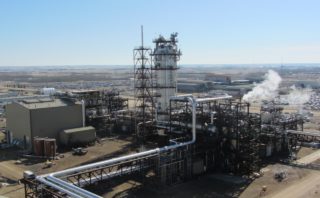-
CCUS report release identifies numerous recommendations to further deployment of the technology
Date posted:
-
-
-
Post Author
Patrick LaveryCombustion Industry News Editor
-
-
![]()
Mission Innovation, the international initiative set up to accelerate public and private clean energy innovation, has released a summary report on the Carbon Capture, Utilization and Storage Experts’ Workshop which took place in Norway in June this year. Its preface lays out the general picture – CCUS technologies are demonstrated from a technical perspective, and necessary to meet Paris Agreement targets, but “overall costs need to be reduced for the technology to be adopted at a sufficient scale to meet the challenges of climate change.” A raft of recommendations (short, medium and long term) stemming from the workshop are given across six different topics: decarbonizing industry sectors; the role of CCS in enabling clean hydrogen; storage and CO2 networks; storage monitoring; “going climate positive”; and CO2 utilization. Most eye-catching amongst them are to “implement guidelines, standards, and financial structures” relating to decarbonising industry, transferring learnings between countries and regions, and introducing incentives for consumers to purchase low-CO2 products. Public-private partnerships are recommended to fund industry clusters and infrastructure for transport of hydrogen and carbon dioxide (and storage of CO2), front end-engineering and design for the same should be carried out, and policies supporting the hydrogen industry instituted. Public authorities should be engaged with to make them aware of underground carbon sink technology and incorporate them into their climate change mitigation planning, and they should be encouraged to launch pilot and demonstration schemes. The public perception of CCUS must also be worked on, as well as an international certification process. Notably, also, a cooperative international project should be launched similar to the Earth Biogenome Project or the International Space Station with the purpose of mapping CO2 storage resources and addressing topics too expensive to be addressed by a single country, such as providing a big international test site. (The Northern Lights project seems to be on track to do this.) There are also recommendations for improving and demonstrating the monitoring of storage, selecting the most promising utilisation opportunities, and gaining more information on exactly what carbon-negative (or ‘climate positive’) emissions scenarios are possible, and to what extent. One must hope that the recommendations are worked on efficiently and effectively.

